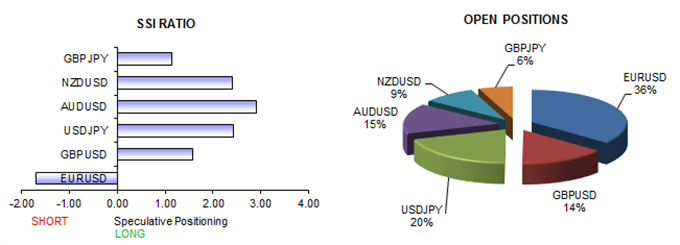- US Dollar and Japanese Yen remain in position to hit further highs
- Euro forecast somewhat unclear, but British Pound and AUD offer alternatives
- See full analysis below in individual currency sections
Receive the Weekly Speculative Sentiment Index report via PDF via David’s e-mail distribution list.
View individual currency sections:
EURUSD - Euro Sentiment Paints Mixed Picture on Next Move
GBPUSD - British Pound Targets Fresh Lows versus US Dollar
USDJPY - US Dollar May Continue Lower versus Japanese Yen
AUDUSD - Australian Dollar Forecast to Fall to Fresh Lows
NZDUSD - New Zealand Dollar Losses Remain Likely
GBPJPY - British Pound Expected to Fall Further versus Yen
Weekly Summary of Forex Trader Sentiment and Changes in Positioning

The US Dollar and the Japanese Yen remain in position to hit fresh highs. Here’s what we’re watching.
See specific US Dollar forecasts in the sections above, and sign up for future e-mail updates via this author’s e-mail distribution list.

--- Written by David Rodriguez, Quantitative Strategist for DailyFX.com
To receive the Speculative Sentiment Index and other reports from this author via e-mail, sign up for his distribution list via this link.
Contact David via
Twitter at http://www.twitter.com/DRodriguezFX







